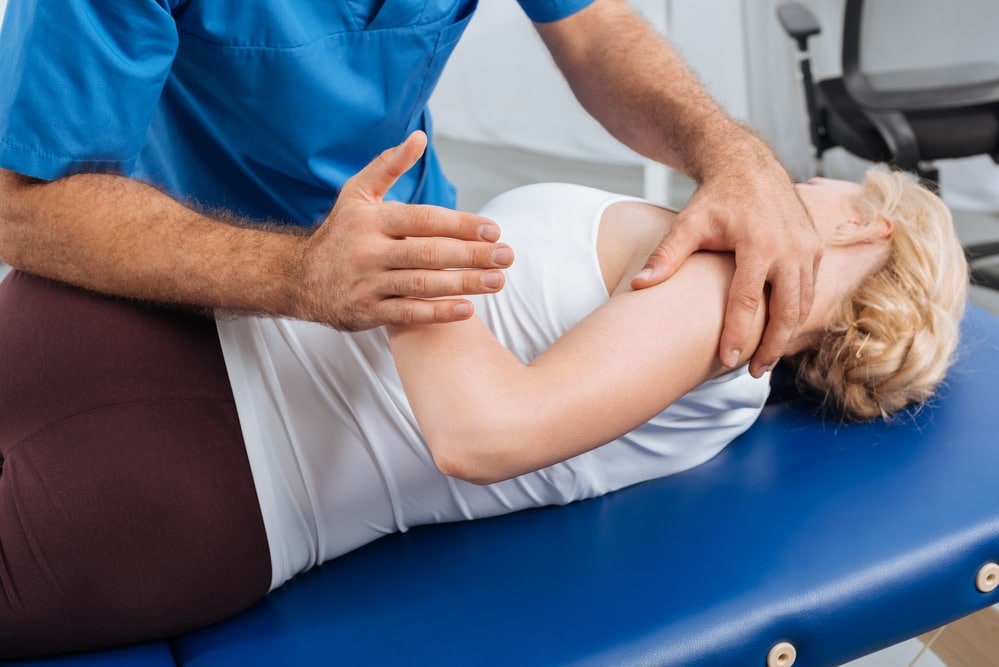Scoliosis is a side curvature of the spine that typically develops during the growth spurt prior to puberty occuring. Scoliosis may be linked to muscular conditions like cerebral palsy and muscular dystrophy, but the majority of scoliosis cases are caused by unknown factors. Approximately 3% of adolescents develop scoliosis. Symptoms of scoliosis can include the following: uneven waist, uneven shoulders, one shoulder blade that is more prominent than the other, a hip that is higher than the other. Scoliosis may worsen over time and can begin to rotate and twist the spine.
Progression of Scoliosis
Many individuals who develop scoliosis as children do not need treatment with a brace or more intensive treatment like surgery. Children who are diagnosed with scoliosis early typically attend regular checkups with their physician in order to monitor their scoliosis for changes in curvature, which occur as the spine grows. The type of treatment chosen for scoliosis depends on several factors including sex, severity of the curvature, pattern of curvature, location of the curve, and maturity. Females have a higher risk of curvature progression when compared to males. Individuals with larger and more severe curves typically have scoliosis that worsens over time. The curve pattern also will determine whether or not the scoliosis will worsen. Individuals with S-shaped curves often have cases of scoliosis that worsens over time. Curves that are located in the center of the spine often have scoliosis that worsens more often than curves in the lower area of the spine. When the bones stop growing, the progression of the curvature of the spine is lessened.
Treatment of Scoliosis
There are two main treatments for scoliosis: braces and surgery. Braces are typically used with children and adolescents. A child with mild to moderate scoliosis whose bones are still growing will typically be fitted with braces. Wearing braces will not cure scoliosis or eliminate the curvature of the spine, but braces will help prevent and slow the progression of scoliosis. Typically, braces are made of plastic and is personalized for each patient by contouring it to their body. Braces intended to treat scoliosis are usually invisible under the clothes and is fitted around the rib cage, under the arms, hips, and lower back. Braces are generally worn during the night and day. The more hours that the brace is worn, the effectiveness increases and prevention of the scoliosis is maintained. Individuals who wear braces are able to engage in activities including sports and other physical work. Braces are typically discontinued after bones are cease growing.
Surgery is typically conducted when severe scoliosis has progressed over time and becomes a physical mobility issue. Surgery is conducted in order to reduce the severity of the curvature in the spine and prevent it from progressing and becoming worse over time. Generally, scoliosis is treated with a spinal fusion surgery. Spinal fusion entails surgeons connecting the vertebrae of the spine together so they are not able to move independently. This is accomplished by pieces of material or bone are placed in between each vertebrae. Screws, hooks, wires, and metal rods are then used to hold the part of the spine straight until the bone or material fuses together with the spine. In childhood cases that scoliosis is progressing very quickly, surgeons are able to place a rod that is adjustable in length and increases in length as a child grows. The rod is placed within the top and bottom sections of the curvature of the spine and is increased in length approximately every six months.
Alternative Treatments
Physical therapy and exercises are not able to stop the progression of scoliosis, but they may be beneficial in improving overall well-being and health. Studies have shown that dietary supplements, electrical stimulation of muscles, and chiropractic manipulation are ineffective in the treatment of scoliosis. Support groups may help adolescents and individuals who are dealing with scoliosis symptoms, treatment, and surgery. Speaking to other individuals who are like minded and going through similar issues may help with acceptance and maintaining treatment goals.
If you or your loved one would like more information regarding recovery and treatment for scoliosis, please call us today at 205-637-1363. We look forward to speaking with you!







